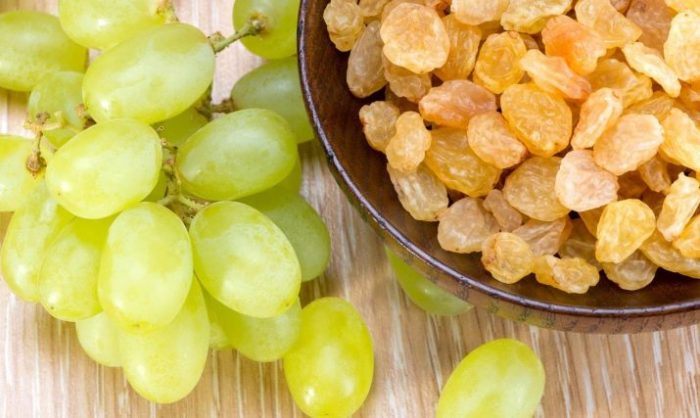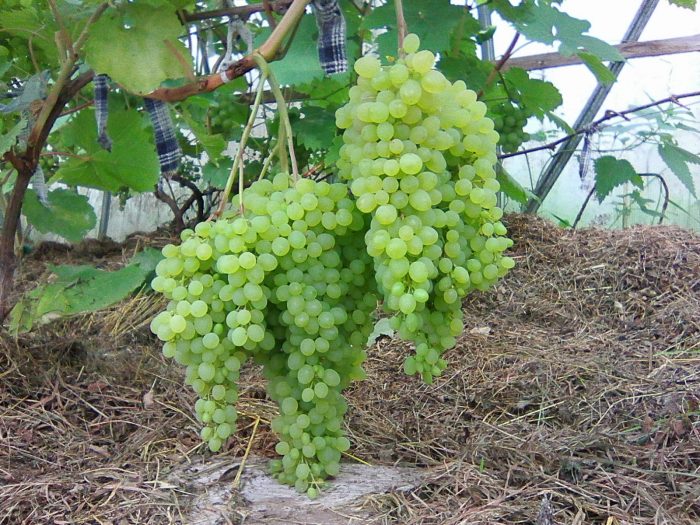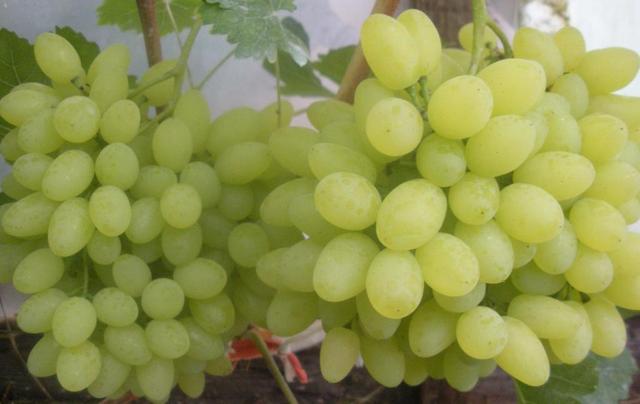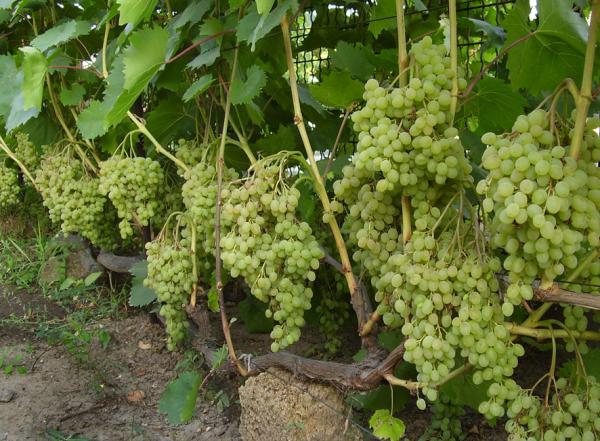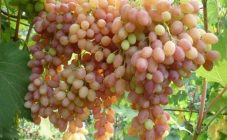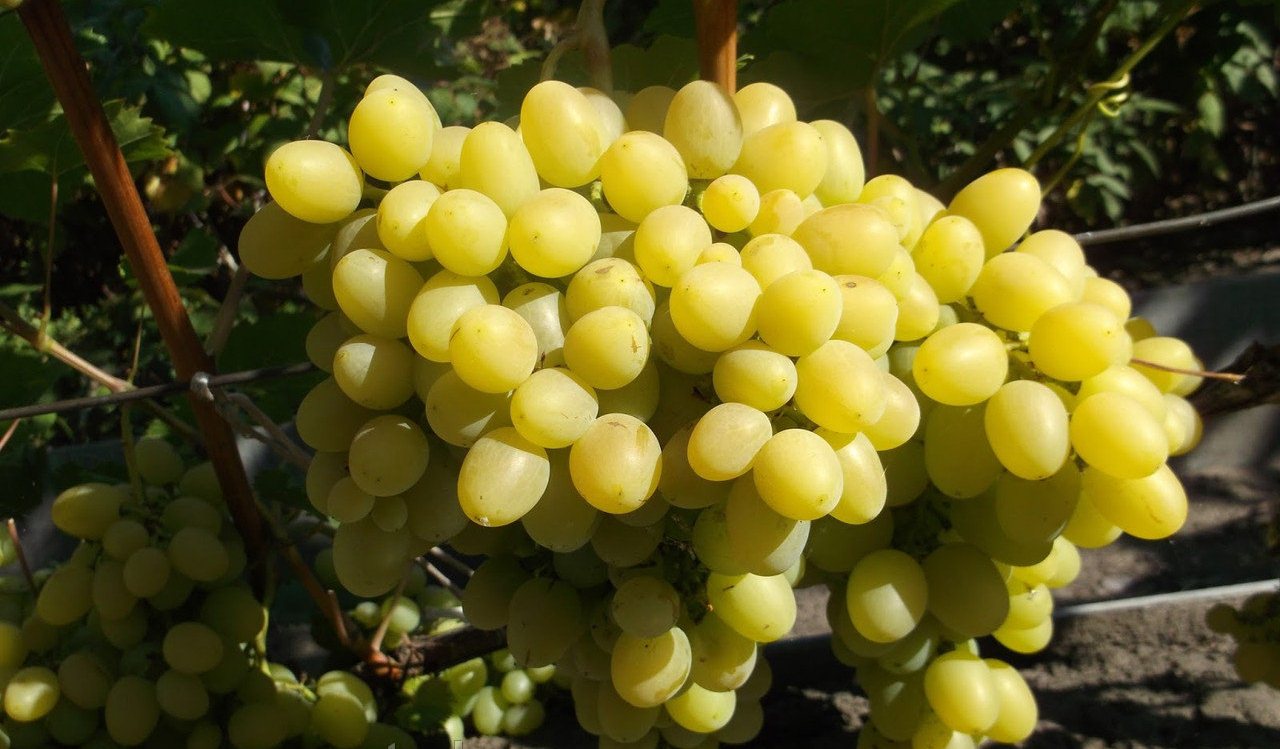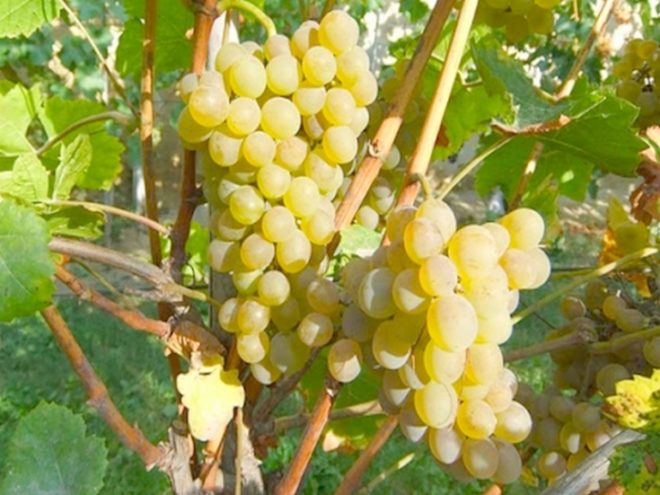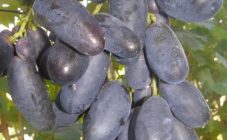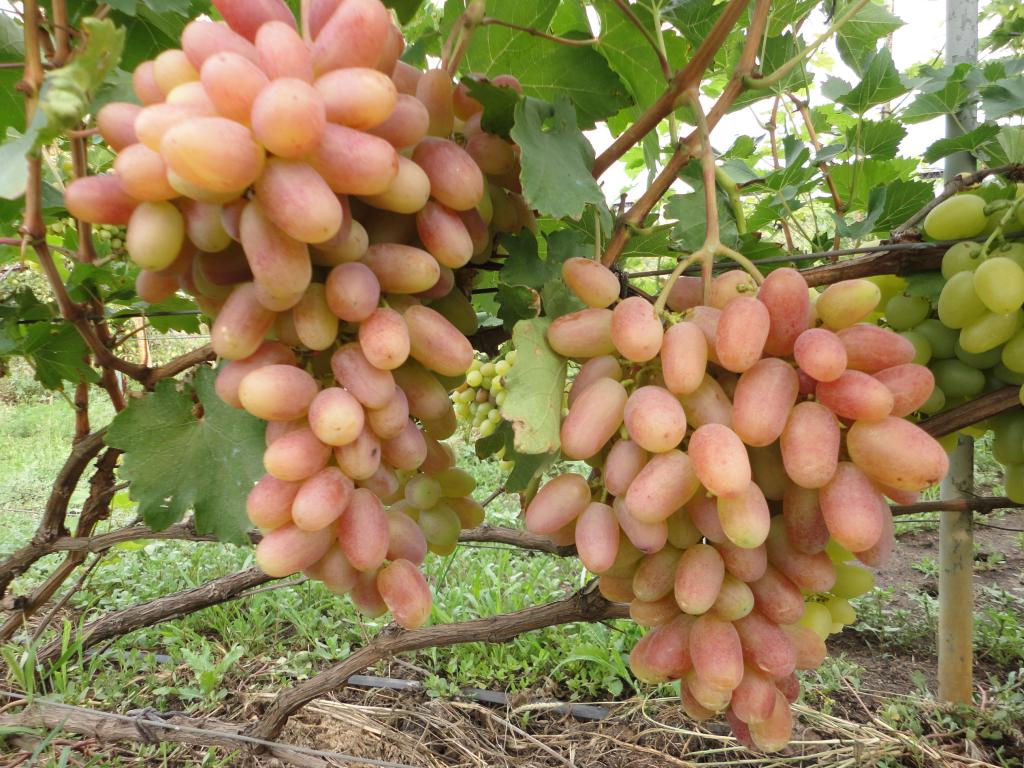Content:
Thanks to their nutritional value, grapes have taken a worthy place in the human diet. Viticulture has been developing for 7 thousand years. If the ancestors of the culture grew only in regions with year-round above-zero temperatures, then varieties of hybrid varieties are able to withstand the climatic conditions of the Moscow region and even the northern regions. The main task of breeders is to achieve sustainable crop yields in harsh conditions.
In 1972, just such a variety was bred - Rusbol grapes. It was created jointly by scientists from Russia and Bulgaria. Obtained by crossing the SV 12–375 hybrid with Superearly. Although to create a species with certain qualities, about 300 of them were selected. There is also a second name for the new hybrid - this is Mirage raisins.
Characteristics and description of Rusbol grapes
By creating a cultivated plant, breeders plan to improve one or another of its qualities. With regard to grapes, mankind has also in various ways bred species suitable for growing in given climatic conditions.
Cultivation conditions and hybrid yield
The main feature of Rusball is frost resistance. The vineyard without shelter can easily endure winter frosts down to -25 degrees. Also, short autumn frosts (at least −3 degrees) do not interfere with the ripening of fruits.
It can grow and bear fruit in any soil. But it will definitely respond by increasing the yield even to the minimum amount of feeding. It can be manure (a bucket per bush), dug in the near-trunk zone or 30-40 grams of hydrogen peroxide per 10 liters of water for irrigation. Peroxide will oxygenate the roots of the plant and help resist germs.
The hybrid is extremely productive. Does not control the setting of shoots and brushes on them. During flowering, the number of future bunches will become visible.
The optimal amount per shoot is 1.5-2 clusters. This is achieved by mechanical cleaning of the bush from weak shoots and inflorescences. Even good bunches are cleared of weak branches. Novice gardeners can be guided by the number of leaves on the shoot that can feed one medium bunch. There must be at least 20 of them.
The hybrid belongs to the early maturing types of table nutmeg - kishmishny. The period from flowering to harvest is only 4 months.
Flowering features and crop parameters
Rusbol's bush is medium-sized. Smooth vines and maple-like light green leaves are disease resistant. It blooms in late April. Large bisexual flowers, which is not typical for grapes, abundantly cover the entire bush. Therefore, there is no shortage of pollinators. By the way, this helps to increase the yield of other plants planted nearby, if the flowering periods coincide.
Transparent yellow, slightly elongated fruits are very sweet. Each berry weighs no more than 4 g. Musky taste is pronounced. Instead of seeds in the heart of the fruit, small clumps are slightly denser than the pulp itself. This explains the propagation of culture by cuttings or stock.
The grape skin is thin, easy to bite. The weight of the bunches themselves ranges from 400 g to 1.5 kg.Their density depends on their location relative to the sun.
The fruits do not tolerate long-distance transportation and long-term storage. Therefore, they are mainly grown for drying and for consumption as freshly harvested.
The specifics of growing raisins
The Rusbol hybrid is not picky. For good development, the simplest conditions are enough for him. It does not tolerate drought, weeds overgrowing and needs mulching.
Soil requirements for planting a seedling
Like any kind of grapes, Rusbol does not tolerate strong moisture and acidity of the soil. Areas with a close occurrence of groundwater are not for him. It is best to choose a sunny, well-ventilated area with lace shade.
Planting holes should be 0.3 m in diameter and 0.5 m deep. The excavated soil should be mixed with decayed leaves and river sand in a ratio of 2: 1: 1.
For good drainage, the bottom of the pit must be laid out with expanded clay or other drainage material with a layer of at least 10 cm. A small amount of soil mixture is poured along the drainage, and a seedling is poured onto it. Next, the main part of the remaining soil mixture is laid out and watered. The optimal amount of water is 10 liters per bush.
After the soil has settled, the rest of the mixture is poured and the entire surface of the hole is compacted very tightly. At the last stage, the entire seedling is mulched with a loose composition such as sawdust or peat.
Planting care
In their natural environment, grape bushes look for their own support. The vine clings to neighboring plants and thus allows the bunches to receive their share of the sun. And cultivated plants have to be put on an artificial trellis. Moreover, you need to fix the vine not in bunches, but each separately.
The grill can be made of wire or twine. Tying begins when the lashes reach a length of 30-70 cm.During the season, with the growth of vines, they are additionally fixed on the upper strings. Tying helps protect the bush from breaking off and sets the desired direction for the shoots.
Rusbol, like no other grapes, needs pruning. Otherwise, multiplicity can completely ruin the plant. Thinning is carried out in the fall, after harvesting. It is optimal to leave 30 eyes on the bush. If necessary, you can adjust the crown in the spring, before the start of sap flow.
The most important thing in growing grapes is the choice of planting material. Seed propagation is not available for Rusbol. He simply does not have them. Remains cultivation by cuttings or graft. Both methods give good results. In harvesting cuttings there is no difference from other types of culture. Usually they are cut in autumn and stored in a cool place until spring (cellar, bottom shelf of the refrigerator). Then they are planted in a greenhouse for rooting.
It is advisable to vaccinate on an undersized mother bush. Tall ones can break under the load of ripe brushes.
The beginner grower mainly plants purchased seedlings. When choosing a material, you need to pay attention to:
- flexibility and elasticity of the roots;
- the presence of a green layer on the root when removing the surface;
- elasticity of the kidneys.
After planting, the bushes should be watered regularly. Enough once a week, but abundantly: at least 10 liters for each bush. At the same time, water stagnation should not be allowed.
To obtain a high-quality harvest, the grapes are advised to be fed. This can be done:
- in spring, before bud break, an aqueous solution of a mixture of phosphate, ammonia and potassium salts in a ratio of 20g: 10g: 5g per bucket of water;
- before flowering (20 g of superphosphate, 5 g of potassium salt, 10 g of ammonia per 10 l of water);
- after laying bunches, but with the exception of the ammonia component (20 g of superphosphate, 5 g of potassium salt per 10 liters of water);
- after harvesting with potassium (20 g of potassium salt per bucket of water).
It is very desirable to apply manure to the root zone of the bush every 3 years in the fall.
The similarity of Rusball with SV - 375 and Superearly. Differences
Rusbol took all the positive qualities from the "parents". From Superearly - high resistance to diseases and the ability to ripen until the end of August, high productivity. The disadvantages of the Superearly include the size of the brushes. They are pretty small. On average they weigh 300-500 g.
From hybrid SV-375 - high frost resistance, which is genetically inherent in it. Unlike Rusball SV-375, it is a technical species with late ripening (145 days). Used for the production of grape juice and wine.
The disadvantages of the Rusbol hybrid include low keeping quality and medium transportability. But the high yield, frost resistance, early ripening and disease resistance make it very attractive for all categories of producers. Be it hobbyists or farmers. In addition, fruiting begins as early as the third season after planting.
On an industrial scale, it is valued as a raw material for harvesting raisins.
Each type of grape has the right to be grown. And in the case of Rusbol, not only tasty fresh fruits are obtained, but also delicious healthy raisins. A high-quality product will also save the family budget.

